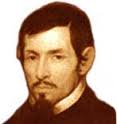Antonio Mira de Amescua facts for kids
Antonio Mira de Amescua (born January 17, 1577 – died September 8, 1644) was an important Spanish playwright. He was born in Guadix, a city in Granada, Spain. Antonio became a priest and later moved to Madrid in the early 1600s.
He was known as a talented writer of plays. In 1610, he traveled to Naples with a Spanish nobleman. Later, in 1619, he became a chaplain for a very important person, the Cardinal-Infante Ferdinand of Austria. Antonio Mira de Amescua also worked with other famous Spanish playwrights like Montalbán and Calderón on plays such as Polifemo y Circe.
His Plays and Style
Antonio Mira de Amescua was special because he wrote his plays very carefully. He didn't just write a lot of plays quickly. Instead, he focused on making each play well-crafted. His characters were strong and memorable. He wrote with a powerful and serious style.
Influence on Other Playwrights
Mira de Amescua's plays were very important and influenced many other writers.
- Two of his plays, La adversa fortuna de Don Bernardo de Cabrera and El ejemplo mayor de la desdicha, inspired the French playwright Rotrou to write his own plays.
- His famous play El Esclavo del demonio (The Devil's Slave) was rewritten by Moreto as Caer para levantar. It also greatly influenced Calderón's play La Devoción de la cruz.
- There is a clear connection between Mira's play La Rueda de la fortuna (The Wheel of Fortune) and plays by Corneille and Calderón.
Some of Antonio Mira de Amescua's plays can be found in a collection called Biblioteca de autores españoles.
See also
 In Spanish: Antonio Mira de Amescua para niños
In Spanish: Antonio Mira de Amescua para niños


